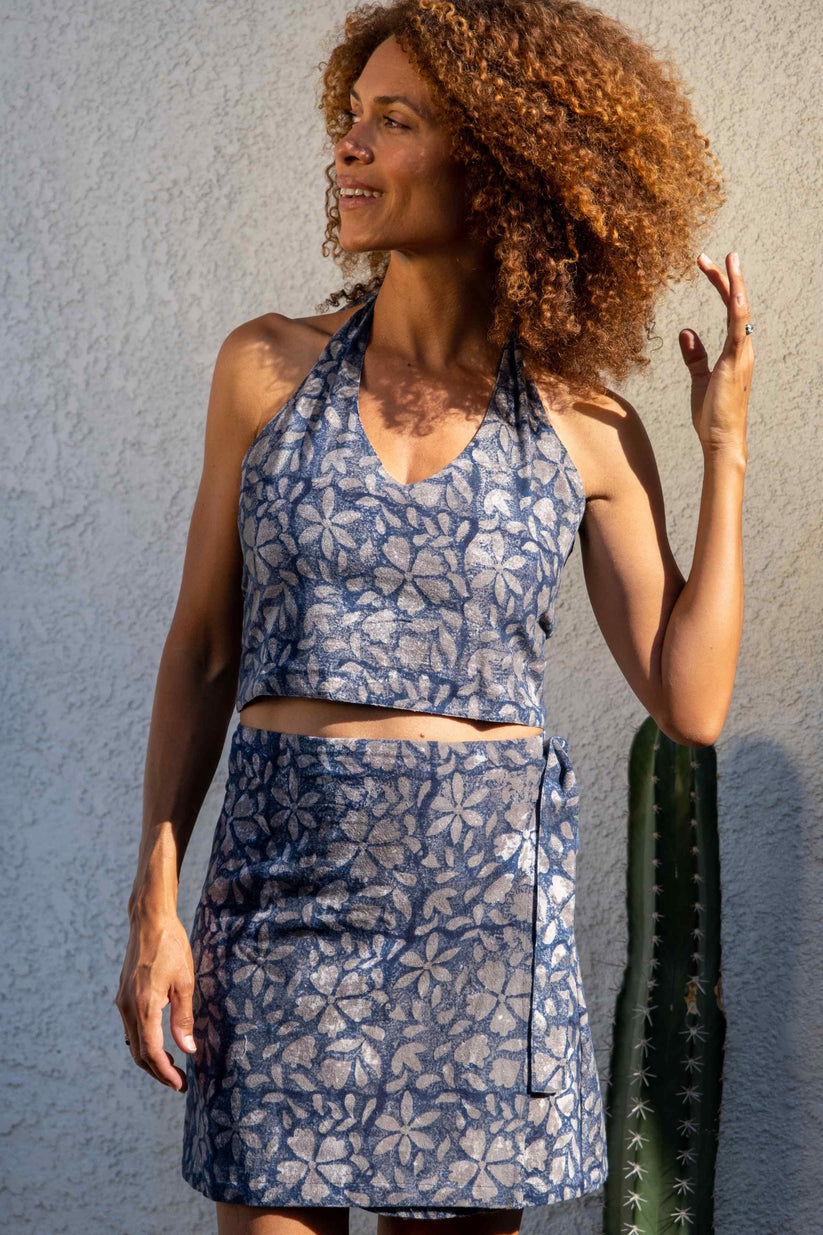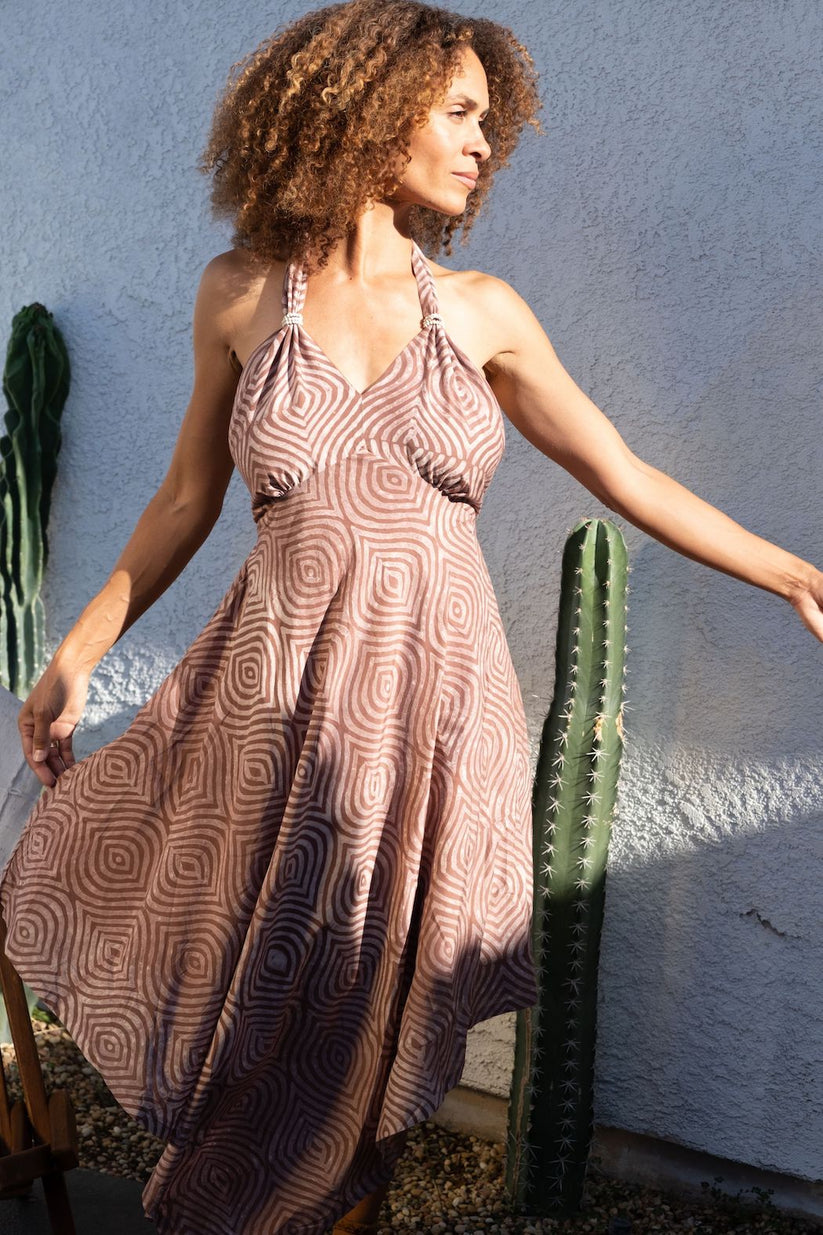END OF SEASON SALE | Shipping resumes Oct 27 after a short break!
The History of Textile Dyeing

The history of textile dyeing is a captivating narrative that unfurls across millennia, bridging cultures, and embracing both the natural world and human ingenuity. From its nascent origins in the ancient world with the use of organic dyes to the spectrum of synthetic colors available today, this journey epitomizes mankind's ceaseless quest for color, vibrancy, and artistic expression.

Photo by Thomas Rainero.
The Primordial Palette: Nature's Bounty
In the earliest chapters of this saga, dyes were drawn exclusively from nature's generous offerings. These primary sources of the common dyes of this time included plants, berries, roots, bark, leaves, wood, and even organic substances like fungi. From these humble elements, ancient civilizations conjured a limited, yet intriguing array of colors. The roots of textile dyeing reach deep into the annals of time, with archaeological evidence revealing its practice as far back as the Neolithic period, known as the New Stone Age, which commenced around 10,200 BC.
In the heartland of ancient China, the art of dyeing textiles flourished around 5,000 years ago, with evidence suggesting that dyes were meticulously crafted from a palette of insects, barks, and plants. These early artisans, driven by an innate desire to embellish the fabrics that adorned their lives, embarked on a creative journey that would ultimately span the globe.
Primitive Beauty: The Limitations of Natural Dyes
While these early forays into dyeing yielded a modest spectrum of colors, they were characterized by their inherent limitations. The hues they produced were often ruddy, with shades of red, brown, and orange being prevalent. However, the enchantment of these colors was marred by their tendency to fade with prolonged use and exposure to the elements. As history would reveal, these natural dyed fabrics, though rudimentary and transient, were the fertile ground upon which the future of textile dyeing would flourish.
Medieval Renaissance: The Rise of Luxurious Dyestuffs
The medieval era, marked by its fervent trade routes and cross-cultural exchanges, was a pivotal period in the evolution of textile dyeing techniques. Here, plant-based dyes, such as woad, indigo, saffron, and madder, took center stage as highly coveted trade goods. These dyes transcended boundaries, traveling the Silk Road and traversing the continents to become cherished commodities throughout Asia and Europe.
The arrival of Spanish treasure fleets further enriched the tapestry of colors available to European textile artisans. Cochineal, derived from tiny insects, and logwood, hailing from the tropical rainforests, brought a profusion of new and exotic hues to the European textile palette. The vibrant reds of cochineal and the deep purples of logwood became coveted treasures, enriching the aesthetic possibilities of dyed textiles and fueling a desire for even greater chromatic variety.

Image by wirestock on Freepik
The New World: The Global Expansion of Textile Dyes
As Europe embarked on a new age of exploration, venturing westward to the shores of the Americas, the legacy of textile dyeing crossed the oceans. Natural dyes, those steadfast companions of textile artisans, journeyed with the colonists, perpetuating their dominance in the global textile market. These traditional dyestuffs retained their prominence as they continued to be cultivated in the fertile soils of the New World.
The Birth of Synthetic Dyes: Sir William Henry Perkin's Mauveine
The world of textile dyeing was poised for an unprecedented transformation, a revolution born from the crucible of the industrial age. In 1856, an accidental discovery by the young British chemist William Henry Perkin altered the course of history. Perkin, in his pursuit of a synthetic quinine, unwittingly synthesized mauveine, a brilliant purple dye. This serendipitous revelation heralded the birth of synthetic dyes, a paradigm shift that would reshape the textile industry.
Mauveine, with its rich and distinctive hue, marked the dawn of a new era in textile dyeing. The laboratory had become the alchemical workshop where colors could be conjured with precision and predictability, transcending the limitations of nature's palette. The age-old quest for vibrant, lasting colors was no longer beholden to the whims of organic materials; it now rested firmly in the hands of scientific inquiry.
The Synthetic Age: A Spectrum of Possibilities
The momentum generated by Perkin's discovery was unstoppable. In 1869, the synthetic duplication of the red dye found in madder, a once-prized natural pigment, marked a momentous turning point. This achievement signified the beginning of the steady decline of dyes sourced from natural origins. As synthetic dyes multiplied in laboratories across the world, the vibrant and enduring colors they produced became emblematic of textile artistry.

Photo by Moonstarious Project on Unsplash
Art and Science of Dyeing: A Transformative Process
The transformation of the dyeing process itself was equally striking. What had once been a rudimentary and often laborious endeavor evolved into a harmonious fusion of art and science. The ancient method of immersing textile materials in water infused with dyestuffs and subjecting them to simmering, often spanning days or weeks, gave way to precise and controlled processes.
Scientific inquiry and meticulous experimentation provided answers to the age-old questions that had plagued textile artisans: Would a particular material yield the desired color? Could that color effectively permeate the chosen fabric? What duration of simmering was necessary to achieve the intended result, and how long would the resultant hues endure?
The Role of Mordants: Unearthing Nature's Secrets
One of the most intriguing facets of early dyeing was the discovery of mordants – substances, typically inorganic oxides, that combine with a dye or stain to fix it in a material. The origins of these mordants were often as baffling as they were ingenious. As Jill Goodwin elucidates in "A Dyer's Manual," the primitive dyers of yore harnessed the transformative power of substances as diverse as salt, vinegar derived from fermenting fruit, natural alum, and even stale urine to enhance the vibrancy and permanence of their colors. The precise origins of these discoveries remain shrouded in the mists of history, lost to time, yet their impact on the evolution of dyeing cannot be overstated.
A Triumph Over Time: From Barbaric Origins to Enduring Beauty
The historical processes of dyeing, as revealed by the curious concoctions of mordants and the arduous methods of dye exploration, might appear unpalatable and even barbaric when viewed through the lens of modern sensibilities. However, these seemingly eccentric experiments laid the foundation for the magnificent, long-lasting colors that grace today's textiles.
The textile industry, through centuries of trial and error, has metamorphosed from its humble origins into a realm where coloured fabric is a boundless realm of artistic expression. From the organic hues of yesteryears to the synthetic dyes of the present, textile dyeing is a testament to human innovation and our unquenchable thirst for aesthetic excellence.
In today's world, textile dyeing stands as a vibrant testament to the indomitable human spirit. Laboratories brim with scientists who conjure a kaleidoscope of colors, while artisans and designers weave these hues into fabrics that grace our lives. The textile industry, with its vast and ever-expanding palette, offers a spectrum of possibilities as diverse as humanity itself.
The dyeing process has been refined to a point where it is no longer a matter of chance but a science, enabling the production of textiles that are not only aesthetically pleasing but also durable and sustainable. Modern dyeing techniques involve precise chemical formulations, state-of-the-art equipment, and a keen focus on environmental considerations.

Image by Freepik
Environmental Considerations: The Next Frontier
As we revel in the boundless spectrum of colors available today, we are also faced with new challenges. The environmental impact of textile dyeing, particularly in the case of synthetic dyes, has come under scrutiny. The use of chemicals and the release of wastewater have raised concerns about pollution and ecological damage.
Related: We’re Going Toxic-Free: Non-Toxic Plant Dyes.
In response, efforts are underway to develop eco-friendly dyeing methods that reduce the industry's environmental footprint. Researchers and manufacturers are exploring sustainable alternatives, including natural dyes, plant-based pigments, and innovative dyeing processes that minimize water consumption and chemical waste.
We at BeachCandy are dedicated to transitioning to using natural dyes whenever and wherever possible in addition to non-toxic organic fabrics. See our new Organics Collection.
A Tapestry of Evolution
The history of textile dyeing is a tapestry woven from the threads of nature, human curiosity, and scientific innovation. From the rudimentary origins of organic dyes to the dazzling possibilities of synthetic hues, it is a narrative that reflects our unrelenting pursuit of beauty, color, and self-expression.
The transition from nature's palette to the laboratory has not only expanded the spectrum of available colors but has also opened doors to new frontiers in textile artistry and sustainability. The story of textile dyeing serves as a reminder that our journey through time is marked by continuous evolution and an enduring quest for the vibrant and the enduring. The textile industry, in all its chromatic glory, remains a testament to our ability to transform the ordinary into the extraordinary, one thread at a time.
Throughout the annals of human history, the textile industry has undergone a remarkable transformation, leaving behind its modest beginnings in the realm of natural dyes. This journey, marked by a ceaseless quest for color and vibrancy, has proven to be a testament to human ingenuity and creativity.
We hope you enjoyed this article about the history of dyes. You might also enjoy The History of Fashion in India.
Shop Our Famous Fit For Women Online Now

Organic Linen Button-Down Shirt
The Organic Linen Button-Down Shirt is a versatile and stylish addition to your wardrobe. Crafted with care, this beautifully stitched shirt is made from organic linen, offering a light and non-sheer quality. Its versatility shines as it can be worn in multiple ways. Whether you choose to wear it on its own as a top, as a chic cover-up for a swimsuit, or layered over a tee or tank top for extra warmth and style, this shirt adapts to your fashion preferences effortlessly. Available in four appealing colors/patterns – Organic mud, indigo, pomegranate block print, and more, you can find the perfect match for your style and vibe.

Organic Cotton Wrap Skirt
The Organic Cotton Khadi Wrap Skirt is a must-have for anyone looking to level up their bottom collection. Made from 100% organic cotton, this skirt boasts a soft and smooth texture for a high-fashion look. It's an ideal base for creating various outfits, whether you pair it with a white tank top, a straw hat, or comfy sandals for the ultimate mid-summer ensemble. For a complete look, combine it with our Khadi crop top and enjoy the comfort and style this versatile skirt brings to your wardrobe.

Organic Cotton Crop Top
The Organic Khadi Cotton Crop Top is a comforting yet stylish piece suitable for any occasion. With a halter design, crop top feature, and high v-neck look, it offers both comfort and style. Designed to provide a braless concealing fit, this cute top is available in four different prints, including organic mud, organic indigo, organic pomegranate, and organic turmeric. It can be worn alone for a chic look or paired with the Khadi wrap skirt for a complete outfit, catering to both simple and complex fashion directions.

Organic Cotton Handkerchief Dress
For ultimate comfort and style, look no further than the Organic Cotton Handkerchief Dress. Available in three captivating colors, this dress features a unique triangle handkerchief look near the bottom and a halter detail around the neck. It's the perfect choice for embracing dresses during spring and summer, offering a blend of gorgeous design and comfort. Whether you're dressing up for a special occasion or simply enjoying a casual day out, this dress has got you covered.

Organic Eye Mask
The Organic Eye Mask is a luxurious addition to your nighttime routine. Part of the organic essentials collection, this mask is available in two organic block prints – indigo mud dye or organic pomegranate. Crafted for comfort, it enhances your sleep quality and adds a touch of luxury to your bedtime rituals. Additionally, it's a travel-friendly companion, making it perfect for long-haul flights. Elevate your self-care with this elegant and functional accessory for those sleepless nights and moments of relaxation.
These top 5 products from the Be the Change Organic Collection exemplify a blend of comfort, style, and sustainability, reflecting the brand's commitment to offering versatile and fashionable options for eco-conscious consumers.
